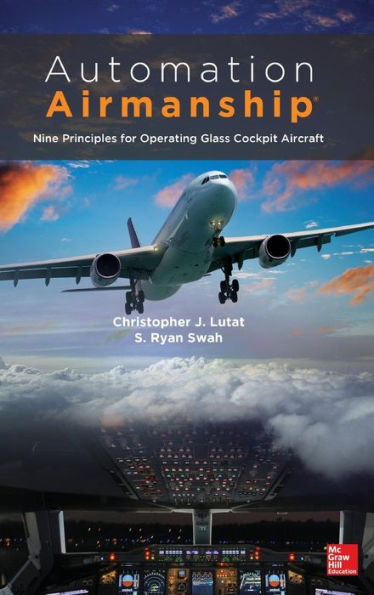Table of Contents
Preface ix
Acknowledgments xv
Part I The Call, the Concept, the Technology
1 The Call for a New Approach to Modern Airmanship 3
Airmanship, Error, and Automation: Air Inter 148 3
New Technology, Traditional Institutions 9
From Chaos and Complexity: Order and Excellence 13
Notes and References 16
2 Expert Performance on the Twenty-First-Century Flight Deck 17
Applying the Discipline of Expertise 17
Toward an Emphasis of the Best 19
Learning Mastery from All Experts 21
Notes and References 26
3 Fundamentals of Modern Aircraft Automation (for Pilots) 27
The Roots of the Modern Flight Deck 27
Why New Technology at All 31
A Contemporary Model of the FMS, for Pilots (and Mission Crews) 32
The Working Partners of the FMS 37
Automation Alone Is Not the Answer 43
Notes and References 45
Part II Organizing the Advanced Flight Deck for Optimum Crew Performance
4 The First Principle: Planning 49
Experience Alone Is Not Enough 49
How Experts Plan 51
Detailed Planning in Automated Aircraft 55
Notes and References 57
5 The Second Principle: Briefing and Debriefing 58
The Vital Role of the Briefing 61
The Importance of a Comprehensive Debriefing 66
Notes and References 70
6 The Third Principle: Data Entry 71
First, the Wetware 73
Expert Data Entry Protocols 78
Notes and References 84
Part III Harmonizing Essential Crew Capabilities with Flight Deck Automation
7 The Fourth Principle: Communicating 89
Communicating Intent, Crew to Aircraft 91
Communicating Intent, Aircraft to Crew 93
Crew-to-Crew Communications 96
Notes and References 102
8 The Fifth Principle: Monitoring 103
Failure to Remain Conscious of the Detail Work 104
Losing Touch with the Delegated Problem 104
Elevating Monitoring to a Front-Line Duty 105
What "Expert Monitoring" Really Means 107
When Things Change Quickly 114
The Monotony of Highly Reliable Systems 116
Monitoring and the Maintenance of Basic Airmanship Skills 117
Notes and References 119
9 The Sixth Principle: Situational and Mode Awareness 121
What Is a "Mode," Anyway? 122
Mode Awareness 124
Situational and Mode Awareness 125
Experts, Mental Models, and SMA 127
Assembling SMA on the Flight Deck 129
Notes and References 131
Part IV High-Level Automation Airmanship of Top-Tier Performers
10 The Seventh Principle: Workload Management 135
Out of Tragedy, a Clear Way Forward 136
A Natural Division of Labor between the Wetware and the Machine 138
The Human Operator as Ultimate Authority 139
Balancing Responsibilities between the Wetware and the Machine 140
Proficiency at Every Level 143
Notes and References 145
11 The Eighth Principle: Positive Flight Path Control 147
How the Wetware Responds to the Unexpected 149
The Pathway to Recovery from Failure and Surprise (the Wetware) 152
Hardware and Software under Failure 155
Fly First 158
Still the Best Buffer against Failure: a Resilient Crew 159
Notes and References 164
12 The Ninth Principle: Logic Knowledge 165
Unreliable Airspeed Redux 165
Two Kinds of Logic Knowledge 167
The Logic of the Automated Systems 167
Flight Control Laws 172
Procedural Logic 173
Notes and References 180
Part V Practical Applications for Automation Airmanship: A Decade of Experience from the Field
13 From Average to Excellent: Performance Benchmarks for Twenty-First-Century Flight Operations 183
The Five Levels of Automation Airmanship 185
The Royal Canadian Air Force: Raising the Human Performance Bar 191
Behavioral Markers for the Twenty-First-Century Flight Deck 193
Performance Evaluation for the Twenty-First-Century Flight Deck 195
Reaching beyond Normal Excellence 197
Notes and References 199
14 Automation Airmanship and Operations: Making Sense of the Technology 201
The Push for Procedures 203
The Pull of Design Thinking 206
The Foundations of Good Interface Design 211
The Role of a Prototype Interface 213
Notes and References 216
Appendix 219
Index 229






